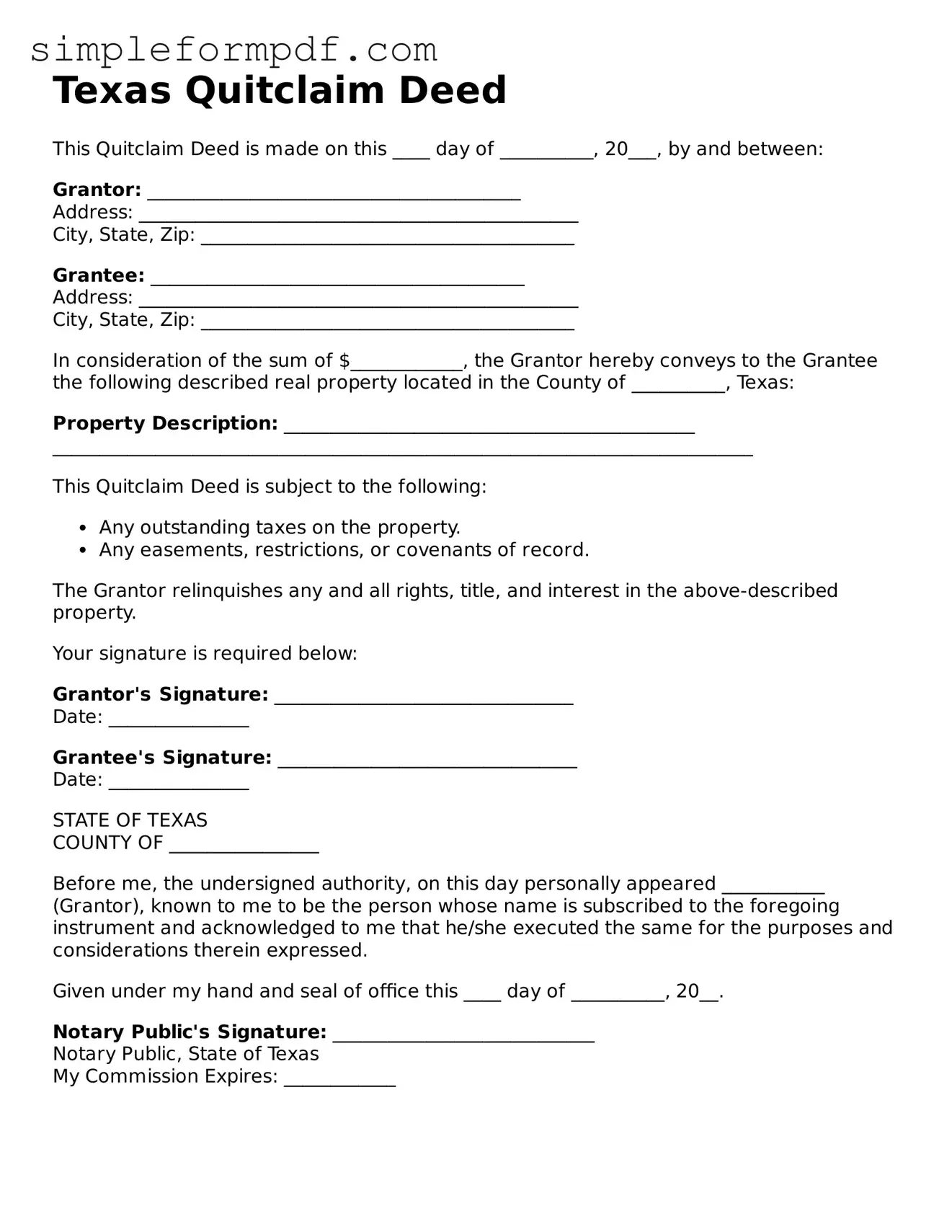Texas Quitclaim Deed
This Quitclaim Deed is made on this ____ day of __________, 20___, by and between:
Grantor: ________________________________________
Address: _______________________________________________
City, State, Zip: ________________________________________
Grantee: ________________________________________
Address: _______________________________________________
City, State, Zip: ________________________________________
In consideration of the sum of $____________, the Grantor hereby conveys to the Grantee the following described real property located in the County of __________, Texas:
Property Description: ____________________________________________
___________________________________________________________________________
This Quitclaim Deed is subject to the following:
- Any outstanding taxes on the property.
- Any easements, restrictions, or covenants of record.
The Grantor relinquishes any and all rights, title, and interest in the above-described property.
Your signature is required below:
Grantor's Signature: ________________________________
Date: _______________
Grantee's Signature: ________________________________
Date: _______________
STATE OF TEXAS
COUNTY OF ________________
Before me, the undersigned authority, on this day personally appeared ___________ (Grantor), known to me to be the person whose name is subscribed to the foregoing instrument and acknowledged to me that he/she executed the same for the purposes and considerations therein expressed.
Given under my hand and seal of office this ____ day of __________, 20__.
Notary Public's Signature: ____________________________
Notary Public, State of Texas
My Commission Expires: ____________
